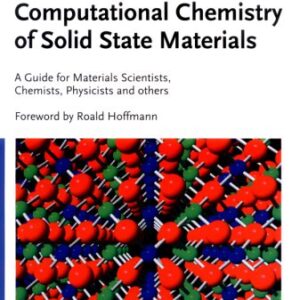Explains the underlying structure that unites all disciplines in chemistry
Now in its second edition, this book explores organic, organometallic, inorganic, solid state, and materials chemistry, demonstrating how common molecular orbital situations arise throughout the whole chemical spectrum. The authors explore the relationships that enable readers to grasp the theory that underlies and connects traditional fields of study within chemistry, thereby providing a conceptual framework with which to think about chemical structure and reactivity problems.
Orbital Interactions in Chemistry begins by developing models and reviewing molecular orbital theory. Next, the book explores orbitals in the organic-main group as well as in solids. Lastly, the book examines orbital interaction patterns that occur in inorganic?organometallic fields as well as cluster chemistry, surface chemistry, and magnetism in solids.
This Second Edition has been thoroughly revised and updated with new discoveries and computational tools since the publication of the first edition more than twenty-five years ago. Among the new content, readers will find: Two new chapters dedicated to surface science and magnetic propertiesAdditional examples of quantum calculations, focusing on inorganic and organometallic chemistryExpanded treatment of group theoryNew results from photoelectron spectroscopy
Each section ends with a set of problems, enabling readers to test their grasp of new concepts as they progress through the text. Solutions are available on the book’s ftp site.
Orbital Interactions in Chemistry is written for both researchers and students in organic, inorganic, solid state, materials, and computational chemistry. All readers will discover the underlying structure that unites all disciplines in chemistry.Content:
Chapter 1 Atomic and Molecular Orbitals (pages 1?14):
Chapter 2 Concepts of Bonding and Orbital Interaction (pages 15?31):
Chapter 3 Perturbational Molecular Orbital Theory (pages 32?46):
Chapter 4 Symmetry (pages 47?77):
Chapter 5 Molecular Orbital Construction from Fragment Orbitals (pages 78?96):
Chapter 6 Molecular Orbitals of Diatomic Molecules and Electronegativity Perturbation (pages 97?122):
Chapter 7 Molecular Orbitals and Geometrical Perturbation (pages 123?150):
Chapter 8 State Wavefunctions and State Energies (pages 151?178):
Chapter 9 Molecular Orbitals of Small Building Blocks (pages 179?203):
Chapter 10 Molecules with Two Heavy Atoms (pages 204?240):
Chapter 11 Orbital Interactions through Space and through Bonds (pages 241?271):
Chapter 12 Polyenes and Conjugated Systems (pages 272?312):
Chapter 13 Solids (pages 313?358):
Chapter 14 Hypervalent Molecules (pages 359?400):
Chapter 15 Transition Metal Complexes: A Starting Point at the Octahedron (pages 401?435):
Chapter 16 Square Planar, Tetrahedral ML4 Complexes, and Electron Counting (pages 436?464):
Chapter 17 Five Coordination (pages 465?502):
Chapter 18 The C2v ML3 Fragment (pages 503?526):
Chapter 19 The ML2 and ML4 Fragments (pages 527?569):
Chapter 20 Complexes of ML3, MCp and Cp2M (pages 570?615):
Chapter 21 The Isolobal Analogy (pages 616?652):
Chapter 22 Cluster Compounds (pages 653?690):
Chapter 23 Chemistry on the Surface (pages 691?734):
Chapter 24 Magnetic Properties (pages 735?792):

![[PDF] Orbital Interactions in Chemistry, Second Edition Thomas A. Albright, Jeremy K. Burdett, Myung?Hwan Whangbo(auth.)](https://pdfelite.com/wp-content/uploads/2024/04/cc8ee2411d59035f296d5df19c015c87-d.jpg)




Reviews
There are no reviews yet.